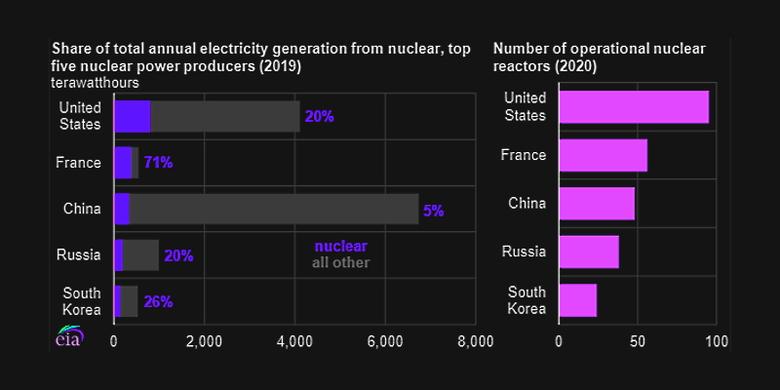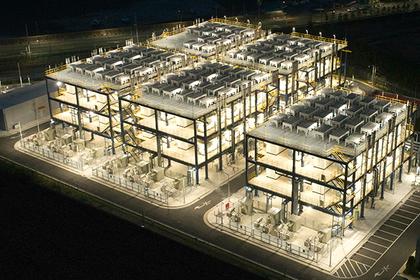
S.KOREA'S NUCLEAR POWER

U.S. EIA - AUGUST 27, 2020 - As of August 2020, South Korea operates a fleet of 24 nuclear reactor units, representing 23.2 gigawatts (GW) of capacity, at four nuclear power complexes. In 2019, South Korea’s nuclear fleet generated 139 terawatthours (TWh) of electricity, making South Korea the fifth-largest nuclear power producer in the world and accounting for 26% of the country’s total electricity generation.
South Korea, which is about the size of Indiana, is home to nearly 52 million people (for comparison, Indiana has a population of 6.7 million). With 24 operating nuclear reactor units, South Korea has the highest density of nuclear reactors (defined as the number of reactors per square mile) in the world. Most of South Korea’s nuclear reactors are located at two complexes in the densely populated southeastern part of the country, near the cities of Gyeongju, Ulsan, and Busan, which are major electricity demand centers and home to many heavy manufacturing plants.
The nuclear fleet in South Korea mainly consists of pressurized water reactors (PWR) that were commissioned between 1977 and 2019. The country also operates three pressurized heavy water reactors (PHWR), Wolsong Units 2, 3, and 4, which were built in the late 1990s.
South Korea has four reactors under construction at two sites, Shin Kori and Shin Hanul, which will add another 5.3 GW of nuclear generation capacity. South Korea’s first nuclear reactor, Kori 1, was permanently shut down in 2017. Wolsong’s Unit 1 reactor was taken offline in 2017 and permanently shut down in 2019, three years before the unit’s operating license would have expired in 2022.
South Korea’s energy policy is driven by energy security considerations and the desire to minimize dependence on imported fossil fuels. South Korea started developing its nuclear power program in the 1970s, aiming to reduce external vulnerability to possible global fossil fuel shortages.
In 2018, 98% of the country's primary fuels consumed for electricity generation came from imports of coal and liquefied natural gas (LNG). South Korea is not served by any international natural gas pipelines and relies exclusively on tanker shipments of LNG for natural gas-fired electrical plants.
South Korea has established a target of reducing greenhouse gas emissions by 37% from 850.6 million tons, which is the country’s 2030 emissions projection based on business-as-usual levels. Because nuclear power plants harness the atomic fission heat process for steam electricity generation and produce virtually no carbon dioxide (CO2) emissions during operation, nuclear power plays a significant role in reducing CO2 emissions.
More recently, in response to safety concerns following Japan’s Fukushima Daiichi nuclear accident, South Korea announced a gradual nuclear phase-out plan, which cuts the number of operating nuclear reactors to 14 units by 2038. However, some stakeholders in South Korea’s power industry have expressed concerns about the feasibility of decommissioning 42% of the commercial nuclear fleet.
More information about the energy sector in South Korea is available in the U.S. Energy Information Administration’s South Korea Country Analysis Brief.
-----
Earlier:















